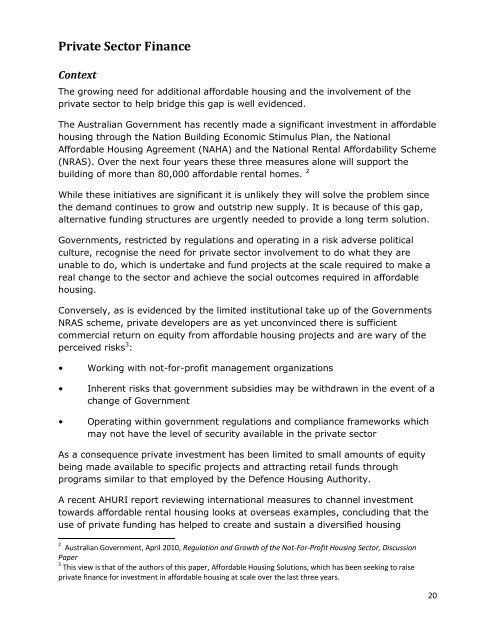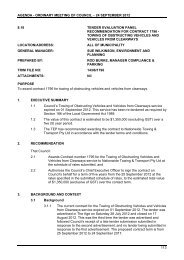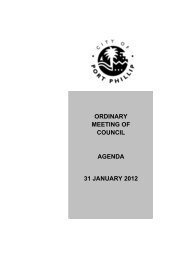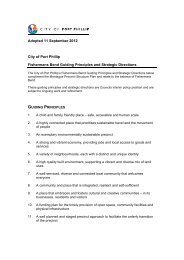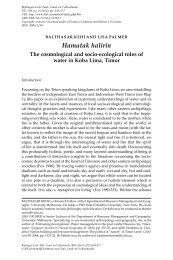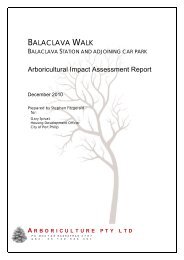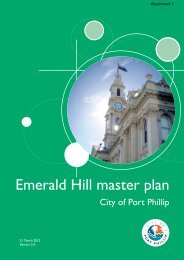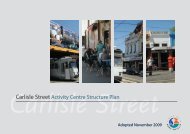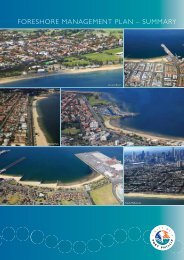affordable housing development models - City of Port Phillip
affordable housing development models - City of Port Phillip
affordable housing development models - City of Port Phillip
You also want an ePaper? Increase the reach of your titles
YUMPU automatically turns print PDFs into web optimized ePapers that Google loves.
Private Sector Finance<br />
Context<br />
The growing need for additional <strong>affordable</strong> <strong>housing</strong> and the involvement <strong>of</strong> the<br />
private sector to help bridge this gap is well evidenced.<br />
The Australian Government has recently made a significant investment in <strong>affordable</strong><br />
<strong>housing</strong> through the Nation Building Economic Stimulus Plan, the National<br />
Affordable Housing Agreement (NAHA) and the National Rental Affordability Scheme<br />
(NRAS). Over the next four years these three measures alone will support the<br />
building <strong>of</strong> more than 80,000 <strong>affordable</strong> rental homes. 2<br />
While these initiatives are significant it is unlikely they will solve the problem since<br />
the demand continues to grow and outstrip new supply. It is because <strong>of</strong> this gap,<br />
alternative funding structures are urgently needed to provide a long term solution.<br />
Governments, restricted by regulations and operating in a risk adverse political<br />
culture, recognise the need for private sector involvement to do what they are<br />
unable to do, which is undertake and fund projects at the scale required to make a<br />
real change to the sector and achieve the social outcomes required in <strong>affordable</strong><br />
<strong>housing</strong>.<br />
Conversely, as is evidenced by the limited institutional take up <strong>of</strong> the Governments<br />
NRAS scheme, private developers are as yet unconvinced there is sufficient<br />
commercial return on equity from <strong>affordable</strong> <strong>housing</strong> projects and are wary <strong>of</strong> the<br />
perceived risks 3 :<br />
• Working with not-for-pr<strong>of</strong>it management organizations<br />
• Inherent risks that government subsidies may be withdrawn in the event <strong>of</strong> a<br />
change <strong>of</strong> Government<br />
• Operating within government regulations and compliance frameworks which<br />
may not have the level <strong>of</strong> security available in the private sector<br />
As a consequence private investment has been limited to small amounts <strong>of</strong> equity<br />
being made available to specific projects and attracting retail funds through<br />
programs similar to that employed by the Defence Housing Authority.<br />
A recent AHURI report reviewing international measures to channel investment<br />
towards <strong>affordable</strong> rental <strong>housing</strong> looks at overseas examples, concluding that the<br />
use <strong>of</strong> private funding has helped to create and sustain a diversified <strong>housing</strong><br />
2 Australian Government, April 2010, Regulation and Growth <strong>of</strong> the Not-For-Pr<strong>of</strong>it Housing Sector, Discussion<br />
Paper<br />
3 This view is that <strong>of</strong> the authors <strong>of</strong> this paper, Affordable Housing Solutions, which has been seeking to raise<br />
private finance for investment in <strong>affordable</strong> <strong>housing</strong> at scale over the last three years.<br />
20


